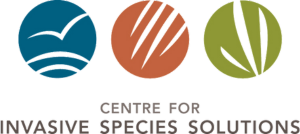Feral pigs in the Otways
James Templeton, Conservation Ecology Centre, Conservation Project Manager
Feral pigs (Sus scrofa) have a profound impact on natural ecosystems, agriculture and cultural values. Since 2018, the Conservation Ecology Centre (CEC) has been using ecological methods combined with practical land anagement techniques to actively manage feral pig populations in the Otways. Because feral pigs do not adhere to property boundaries, a coordinated, landscape-scale approach is essential for effective control at a landscape scale. The CEC collaborates with a diverse network of land managers, including National Parks, Forest Parks, private plantations, water authorities, private land holders and communities to facilitate and deliver a unified approach to the threat. Currently, the CEC is funded through a relatively small project budget provided by DEECA and Parks Victoria under the Protecting Biodiversity Program. This funding supports our ongoing efforts in priority protection areas within the Otways. Building on the knowledge gained and successes of our previous work we continue to effectively monitor and control feral pigs, engage with stakeholders, and respond to reports, even with limited resources.
For reporting sightings or damage caused by feral pigs, please use the FeralScan app or contact the Conservation Ecology Centre directly.
CEC Feral Pig Management Program in the Otways: An Overview
Impact of Feral Pigs
Feral pigs (Sus scrofa) have a profound impact on natural ecosystems, agriculture and cultural values. These omnivores consume a wide range of native species, including small ground-nesting birds, reptile and bird eggs, frogs, earthworms, and various plant roots and tubers. Their rooting and wallowing behaviours degrade waterways, disrupt ecosystems, and contribute to the spread of pathogens, weeds, and diseases. They also cause extensive damage to pastoral areas, posing significant biosecurity risks to the livestock industry.
Significance in the Otways
The Otways region, located in South-West Victoria, is home to a number of significant ecological communities such as the Cool-Temperate Rainforest, and threatened species including the Long- nosed Potoroo, Otways Black Snail, Corangamite Water Skink, and Swamp Antechinus. Feral pigs pose direct threats to these unique natural resources.
Conservation Efforts
Since 2018, the Conservation Ecology Centre (CEC) has been actively managing feral pig populations in the Otways. This work, supported by various stakeholders, focuses on applied research, monitoring, and community engagement to inform effective management strategies.
In 2020, the Wild Otways Initiative provided vital funding for research into feral pig movement and distribution, enabling us to trial new monitoring and control methods. This initiative has led to a significant reduction in feral pig numbers and improved our understanding of their behaviour, population dynamics, and biosecurity risks across the region.
Currently, the CEC is funded through a relatively small project budget provided by DEECA and Parks Victoria under the Protecting Biodiversity Program. This funding supports our ongoing efforts in priority protection areas within the Otways. The knowledge gained from this previous research and management initiatives allows us to effectively monitor and control feral pigs, engage with the community, and respond to reports, even with limited resources.
Collaborative Approach
Feral pigs do not respect tenure boundaries therefore in order to achieve effective results, management requires a cross-tenure, landscape-scale approach. The CEC works closely with land managers across National Parks, Forest Parks, private plantations, water authorities, and private land to facilitate and deliver a unified and collaborative approach to feral pig management.
Management and Monitoring Tools
To effectively manage and control feral pigs in the Otways, we employ a range of best practice tools and techniques:
- GPS Tracking Collars: We have fitted GPS tracking collars to a mix of boars and sows across various parts of the Otways. These collars provide valuable insights into pig movements, habitat use, and behaviour. By tracking their movements, we can identify areas where pigs are most active and where outlying populations may be persisting.
- Camera Grids: We deploy replicated camera grids across key target areas. These grids help us monitor pig activity, determine their locations, and assess the number of individuals. By examining distinctive features such as colour, markings, sex, and group dynamics, we can target our control efforts more precisely. These grids also provide tremendous insight into the efficacy of our management approach as well as information on other non-target species (native and invasive).
- Environmental DNA (eDNA) Analysis: We collected 76 water samples from 25 different waterways to conduct eDNA analysis. This technique helps detect the presence of feral pigs by identifying their genetic material in water samples, providing additional insight into their distribution
- Aerial Infrared Surveys: We trialled an aerial infrared survey over two target areas. This method did detect pigs in one location but proved less viable in the Otways due to the thick canopy.
- Remotely Operated Cage Traps: Our primary management tool is the use of remotely operated cage traps. These traps are set up with a fermented corn mixture, which attracts pigs to the site. We monitor pig activity through livestream cameras linked to our phones, allowing us to remotely drop the trap door ensuring the entire group is captured in one go, rather than a few here and a few there. This method avoids negative consequences of other control approaches such as ground shooting, which disperses pigs.
- Sodium Nitrite Bait Stations: In more remote areas where remote cage trapping is impractical, we use sodium nitrite bait stations. Although this method is less preferred due to reduced control and higher effort, it provides an alternative for managing pigs in hard-to-reach locations.
Future Directions
We are striving to secure additional funding to expand our capacity, further enhance our understanding of feral pig dynamics, and keep on the front foot of feral pig population expansion and recursion. We are also exploring new research areas, including social science aspects related to feral pig releases and illegal hunting.
For reporting sightings or damage caused by feral pigs, please use the FeralScan app or contact the Conservation Ecology Centre directly.
Project Partnership

Our collaboration with the Centre for Invasive Species Solutions (CISS) includes in-kind support for feral pig projects.